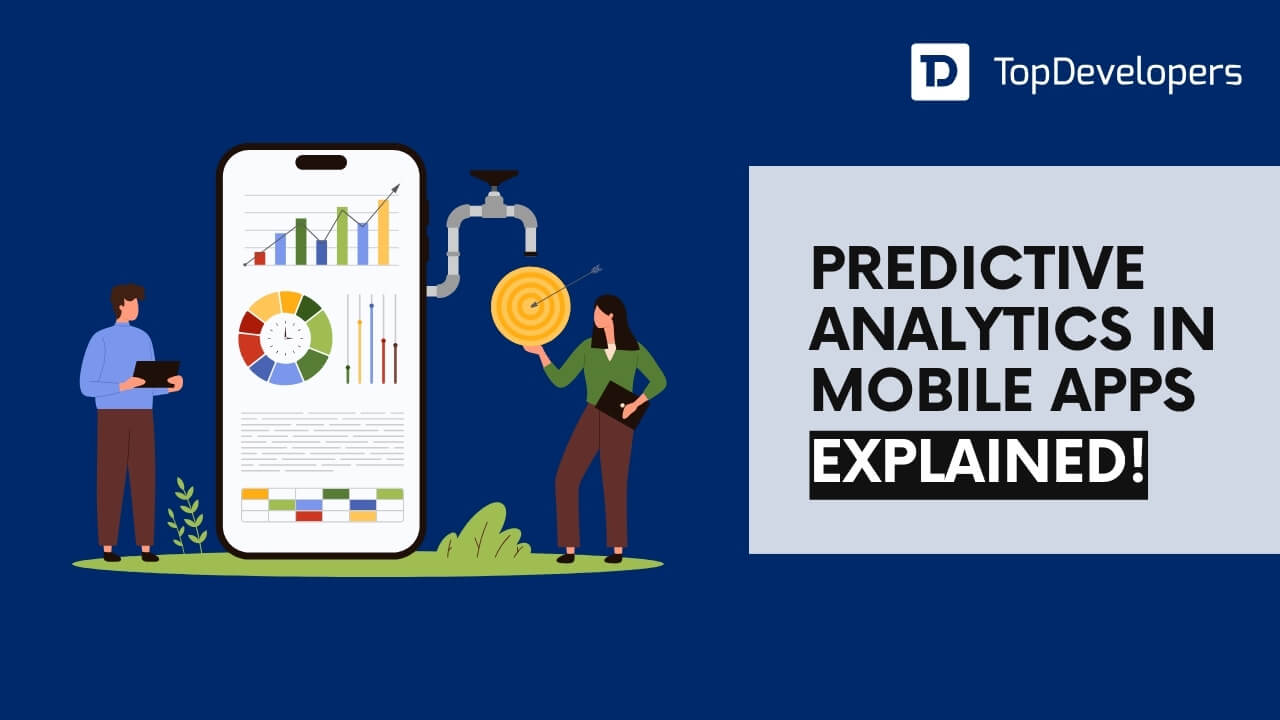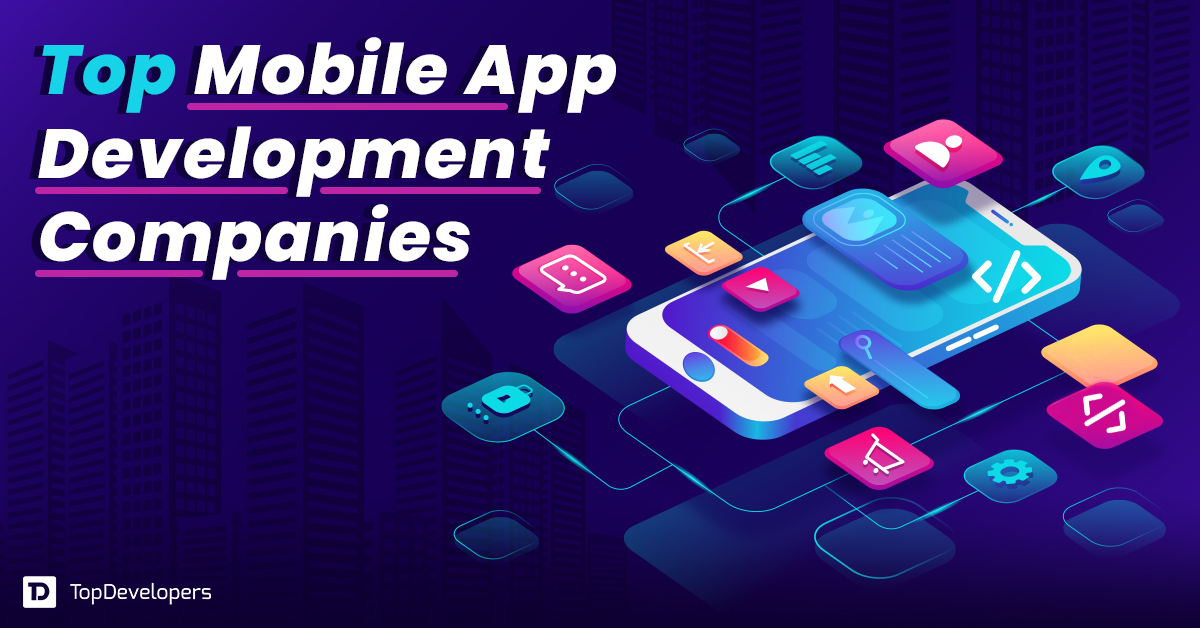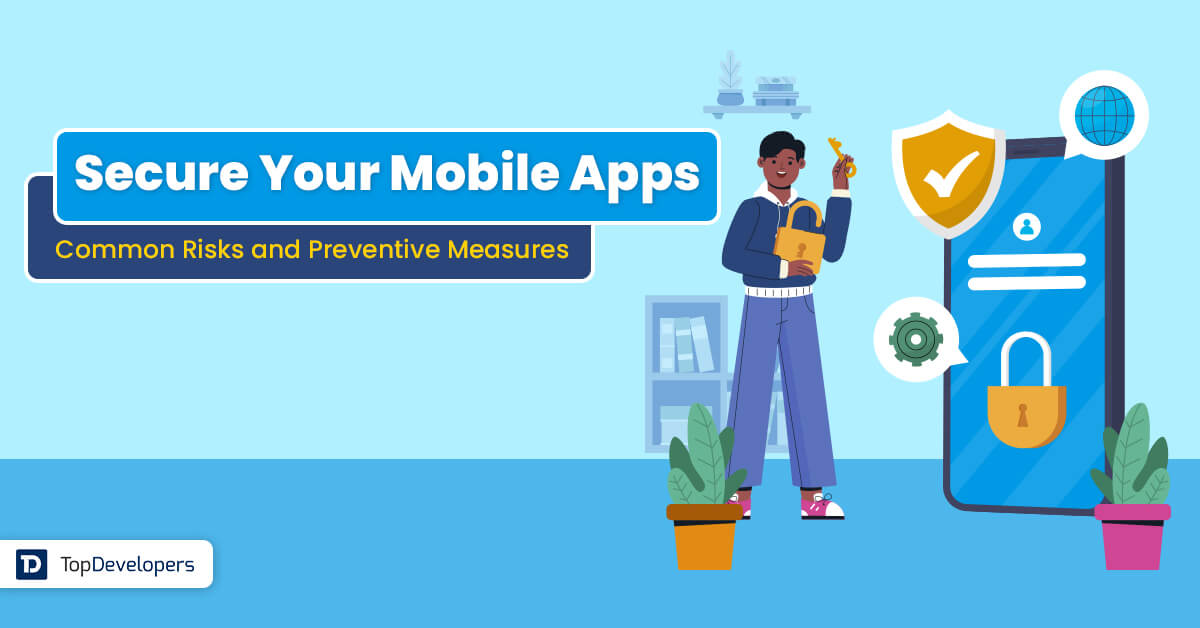
Do you want to make an app but don’t know where to start? In this blog, we have discussed a step-by-step process of mobile app development. The blog aims to give the answers to your questions, how much time does it take to develop an app? How to build the app? How much does it cost to make an app? Which development method is best for app development? and more to help you build a successful mobile app development business strategy.
The mobile app market is expected to grow by $653 billion by 2025. The phenomenal potential of the mobile app industry has lured many entrepreneurs toward it. While most businesses don’t know how to create an app, many of them do not know the actual steps to building a mobile app. knowing a bit about “how to develop an app ” helps to choose the right mobile app development company easily. To answer the question, how to make an app? You will need to have a look at the mobile app development process.
Mobile app development is a complex process. This complex process of mobile app development can be broken down into a few steps. By breaking down the process into a few steps, we intend to gain some clarity and build a high-quality end product. In this blog, we have provided you with a step-by-step process to create a mobile app.
Table of Contents
- Things to know before you build and design your Mobile App
- Step-by-Step Mobile App Development Process
- How Long Does It Take to Make an App?
- How Much Does It Cost to build a Mobile App?
- Post-development steps
Things to know before you build and design your Mobile App
Survey your competitors
As soon as you make a foray into the market as a reputable company, it’s imperative for you to know that your success mainly depends on how remarkably it stands out among its competitors. Check if they have built a mobile app solution to solve a similar problem in the past. Examine it closely! See what worked for them and what didn’t. Research well and then form your opinion. Apart from this, your customer is King and make sure that you listen to them as well.
Look around for similar business models
One of the common mistakes made by business owners is that they limit their research to direct competitors. You should always avoid it. Instead, think hard about what you are willing to come up with- Are you building an on-demand app? For example, if you aren’t making an app to rent cars then it doesn’t mean you can take Uber as an example of handling best practices. You never know which company has solved your problem before. Make sure you don’t reinvent the wheel.
Mobile needs or mobile wants?
Are you willing to build everything that your end user craves for? Well, then you won’t be able to stay longer. Understanding what they need is more important than offering them what they want. It is truly said, a mobile app built for everyone is built for no one. So, all you have to do is focus on your core mobile customer’s needs and not all of “nice to have aspects.”
Make your apps play nice
Do you think your users have accustomed to the web app? Well, if so it is essential to make them feel familiar with your mobile app as well. Remember, your mobile app needs to complement that experience. After all, it can’t exist in a silo. Also, in case your customer is unable to use both the web and mobile apps seamlessly then there is something that needs to be corrected in time.
Plan for the maintenance of your mobile app
Mobile app development also includes maintenance as its core. It’s not a one-time deal as trends keep on changing quickly. Make sure your plan incorporates updates and additional developer expenses in the future.
Step-by-Step Mobile App Development Process
Once you know about the time taken to build a mobile app, the cost of developing an app, and whether to go for iOS or Android app development, you can then proceed toward the actual app-making process.
Step: 1- Identity Project Requirement
Before you start app development, your objectives to build the app should be clear. Figure out the reason why you want to build this app and what purpose it will serve.
All apps are built with the intention to solve a particular problem of the users. Think about why someone would install and use your mobile app.
Here are a few examples:
McDonald’s App: The app allows the users to browse and order their favorite food items from the menu of McDonald’s
Whatsapp: This allows the app users to share photos, videos, voice messages, and text messages with their family and friends.
The problem that your app intends to solve does not need to be entirely new. Your app could offer a twist to the existing solution and taste success. For instance, although Zoom was not the first app to provide video calls to users, it made video calling a lot easier than its predecessors. Hence, it’s not necessary to reinvent the wheel; you can build a successful app just by identifying the user’s needs and fulfilling them in the best possible manner.
Step: 2- Market and Competitor Research
Market research is a vital component of a successful app-making process. Through in-depth market research, you will get the following benefits.
- A better understanding of the needs of the users
- The types of mobile apps that are successful
- How the existing apps are solving the issues of users
When you conduct market research, always make it a point to do extensive competitor analysis. If you have the budget, then you could use analytics software to identify the strength of your competitors. It would be a nice idea to download some of the best apps to try them out yourself.
When you research other apps, ensure to take notes regarding what you like and dislike the most about each app.
While you are researching other mobile apps, make sure to consider:
- The features of the apps
- Are all these features useful?
- What is their USP?
- The UI/UX of the apps
- Screen transition
Understand that while it’s okay to include some features of your competitors, a blatant copy of their mobile app cannot work. You will need a unique selling proposition (USP), a factor that differentiates your offering from the rest of the apps out there. A thorough competitive analysis will help you find out this USP and capitalize on it.
Put yourself in the shoes of your users to gain insights into their pain points. Robust market research will save you from making a lot of mistakes at an early stage.
Step: 3- Create a Wireframe for an App
The next step is to build a wireframe for your app. A wireframe is a visual representation of the app’s layout and the flow between different screens. Wireframing provides the app its first skeleton and combines the individual design blocks together. A wireframe acts as a bridge between your thoughts and the final product and helps you to avoid any mistakes before you start building the app.
Here are the two basic methods through which you can build a wireframe
- Offline– Use a pen and paper or a printable sketch template
- Online– You can build a wireframe using a wide variety of wireframing tools available online like NinjaMock, Adobe Suite, Fluid UI, and others.
Step: 4- Select the Best Method for App Development
Once wireframing is finished, you can focus on the coding part of the app. This is the part where you will choose the type of app that you want to develop, the coding language, and the app development methodology. While it’s not easy for people from non-programming backgrounds to discuss such technical things, if you are clear with your requirements, then the process becomes easier.
Select a platform as per your requirements and budget
There are two major platforms for app development.
Native app development
Native app development is concerned with developing an app for a particular operating system. With native app development, you will need to build two separate apps for Android and iOS in case you want to tap the user base of both operating systems. While there is no doubt that native apps leverage the functionalities of each OS to the full, the cost of developing two separate native apps will be more as compared to developing a cross-platform app.
Cross-platform apps
Cross-platform apps are those apps that can run on both iOS as well as Android devices. Cross-platform app development saves you from the development cost of building two separate native apps if you follow the right tools and tips for efficient cross-platform app development. The issue with cross-platform apps is that these apps cannot leverage the specific functionalities of each OS, and hence their performance is not as good as native apps. With the onset of cross-platform app development technologies like Flutter and React Native, this performance gap has lowered significantly.
Select the right programming language
Once you have decided whether to go for native or cross-platform app development, the next step is to select the right programming language.
For an Android app, you can design the interface of your app using XML and use languages like Kotlin, Java, or C++, depending on the preferences of your developers.
For an iOS app, you will need XCode IDE and a decent knowledge of the Swift programming language. You could also go for Objective-C if your developers are more comfortable with that language.
Flutter, React Native, and Xamarin are the go-to cross-platform app development technologies.
Project Methodology
Mobile app development is a project, and to finish the project successfully, one needs to follow a systematic project development methodology. A robust project methodology will allow you to coordinate the project and allocate the resources efficiently.
Here are the most popular project development methodologies:
Waterfall model
The waterfall project model executes the development phases sequentially. The development team needs to complete one phase completely before they move on to the next phase. A major drawback of waterfall methodology is that once you start, there is no turning back as it is a complete process from start to end. One can make changes only in the maintenance stage.
Agile model
The agile methodology allows the development team a lot of flexibility. In an agile model, the project is divided into a series of development cycles or time boxes. Every time box is assigned to a particular individual on the project team, agile is a collaborative approach that allows response to rapid changes. The agile framework is accommodative of a lot of iterations, and this is why it eliminates the errors that commonly occur in app development.
Kanban methodology
Kanban project management methodology provides the development team with a visual overview of the tasks associated with completing the project. The deliverables are categorized into 3 categories.
- To do
- In progress
- Done
Development teams commonly use kanban boards, and it is one of the most simple and trusted project management methodologies out there. The project manager is responsible for assigning tasks to different team members on board. Every person will move the tasks to the done column once the task is complete. Kanban helps the development teams manage the bugs. As and when new bugs are reported, a new card is generated in the to-do backlog of the project.
Step: 5- Define Features and build an MVP
Once you have defined the development method of the app, now it’s time to identify the features and functionalities that you want to include in the app. Conduct thorough market research to find out what your competitors offer and identify the areas where their solutions lack. This way, you will be able to zero in on the features that you need to integrate into your app. Consider integrating features like Augmented Reality, Virtual Reality, and Machine Learning into your app. These exciting technologies can help you stand out from the competition.
When you prepare the features list, make sure that all the features that you have included are relevant to your solution. Adding irrelevant features would harm your app and will affect its performance of the app. To ensure that you add only the relevant features, build an MVP(minimum viable product). MVP development is a vital part of the app development process. An MVP is an app with all the basic and necessary features. It consists of all the relevant features and excludes the features that are irrelevant at the initial stage. Once you release an MVP, then depending upon the user feedback, you can think about including other features. An MVP will not only help you achieve a faster time to market for the app, but it will also help you minimize the costs of developing the app.
Step: 6- Mobile App Testing
Once the app building process is complete, it’s now time to test your mobile app to ensure that there are no bugs and the user experience is an intuitive one. Testing for a mobile app can be classified into the following two broad categories.
- Internal testing
- External testing
Internal testing is concerned with testing the app by your development team. In external testing, the development team gives the app to the end-users. Tools like TestFairy, Ubertesters, and User Testing can prove helpful in external testing.
Whitebox testing involves testing the internal workings of an app. In white-box testing, the test cases are designed using an internal perspective of the system and programming skills.
Blackbox testing examines the functionality of the app without viewing the internal workings app.
Step: 7- Release the App on app stores
Once the app is developed and tested, it’s now time to release it on the app stores. First, you will need to submit your app to the relevant app stores. There are two major app stores out there, namely the Google Play store and the Apple AppStore. Whenever you submit an app to these app stores, you will need to follow their guidelines for app submission. If you fail to adhere to the app store submission guidelines, then these app stores won’t publish your app. According to a report, the Apple AppStore rejects 4 out of 10 apps submitted, while the Google Play Store rejects 5 out of 10 apps submitted to their app store.
There are various reasons for these rejections. Bugs, crashes, privacy issues, compatibility, and minimum usability are the primary ones. The app developers should have a good understanding of all the app store submission guidelines to ensure a smooth app submission.
Step: 8- Marketing the App
Many people are under the illusion that good products do not need marketing. Nothing can be further from the truth as countless great products have died an untimely death because their owners could not market the product properly. Where would Apple be if Steve Jobs did not have a vision of how to market Apple’s products?
Marketing is a way to tell the users who you are, how your app is different from the competition, and how your app will solve the user’s problem. Marketing the app will also help you to monetize the app effectively as it will let your app reach a maximum number of users.
To develop an effective app marketing strategy, you will need to ask the following questions yourself.
- Who is your target audience?
- How can you reach your target audience?
- What problem does your app solve?
You can promote your app in the following ways.
- Publish a banner on your website
- Publish blogs about your app
- Promote the app amongst your existing customers
- Promote the app on social media
- Ask influencers to promote your app
A decent app marketing strategy will ensure success for your app.
How Long Does It Take to Make an App?
The time taken to develop an app depends on a few factors:
The nature and number of features to be integrated into the app
One of the major determinants of the time taken to develop a mobile app is the number and complexity of the features that you want to include in the mobile app. The more features an app has, the more effort and time it will take to develop the app. Similarly, the more complex a particular feature, the more time it will take to develop the app. For instance, integrating an AR (Augmented Reality) feature into an app will take more time than integrating a simple content upload feature.
The number of third-party integrations with the app
Most of the apps will have third-party integrations. Integrating a third-party application with the app requires time on the part of developers. This is because the developers have to learn the intricacies of the third-party APIs to integrate these APIs into the app successfully.
Number of screens/ operating systems/devices/ platforms that the app needs to support
To reach a wide range of users, app developers need to build apps that can support multiple platforms, devices, screen sizes, and operating systems. To build such apps, the development team needs to invest extra effort and time.
Depending upon the factors mentioned above, it can take anywhere between 10-50 weeks to create an app.
How Much Does It Cost to build a Mobile App?
Like time, the cost of developing a mobile app also depends on a wide range of factors. We have discussed a few important ones below.
UI/UX of the app
The User experience (UX) and User Interface (UI) are vital components of a mobile app. Incorporate the best UI and UX design principles into your app to ensure that the users find your app smooth to operate. UI and UX have the power to make or break your app. The more UI and UX components in your app, the more will be the complexity. As the complexity increases, so does the cost.
App hosting and security
Mobile apps can carry loads of data, and many apps exchange data in real-time. The data can be related to financial transactions, user search data, or employee data. According to the scale and traffic density, one needs to rent appropriate servers. Any data breach can have dire consequences for your business. Hence to ensure that no data breach occurs, you need to deploy cutting-edge security measures in your app.
Dedicated servers with advanced multi-layer security come with additional costs. Hence if your app deals with a lot of sensitive data, then prepare to spend more on app hosting and data security costs.
App development team
Businesses can either choose to outsource their app development to professional app development firms or hire an in-house team to develop an app. A question that arises to the mind is which one is cost-effective? Well, availing of outsourcing app development services is much more economical than hiring in-house developers. Hiring an in-house development team involves an extra cost as you have to bear the cost of acquiring office space, computers, software to develop the app, and the salaries of in-house developers. The better alternative is to outsource mobile app development to app development companies as they already have the infrastructure and team required to develop an app.
App functionality
The cost of app development varies according to the functionalities that you include in the app. As the complexity of the app increases, so does the cost. Social media apps or apps that have cloud-based service systems are complex apps for which app developers need to integrate a lot of APIs and functions. It takes time to write, test, and deploy these kinds of apps, and with time, the development costs also increase. Gaming is another such application that requires the support of high-quality graphic supporting services. Such services come at an additional cost.
The more complex the nature of the functions that you want to install in your app, the more will be the cost incurred. Depending upon the above-mentioned factors, the cost of developing a mobile app can vary between $30,000- $350,000.
Post-development steps
The post-development steps play an important role in the app development process. Once the development is finished, the app’s life cycle starts. To consistently improve your app’s performance, you will need to obtain first-hand feedback from the users. User feedback can be obtained by asking your users to review the app on the app stores. You could even send an email to your app users asking for their feedback. A line or two will do. Once the users provide their feedback, analyze the feedback and instill their suggestions into your app to make it more user-friendly.
Using app analytics, you can see what kind of users prefer your app. App analytics allows you to bifurcate your users according to age group, location, type of operating systems they use(iOS or Android), and other such parameters. Once you know the type of users using your app, you can then target such users in other geographies and expand your market quickly.
Once a large number of people start using the app, you might encounter a few bugs. If a majority of users have asked for a particular feature or they are irritated with a bug, then you can address them in future updates.
Whenever Google or Apple launches a new OS (Operating System) update, you will need to update your app along with the update.
The final words
Building apps is a complex process, whether it’s your first app or whether you have built multiple apps. Having a step-by-step process for app building can help you eliminate the errors that creep into the app-building process. A robust app development process is needed irrespective of the fact whether you build an app using an in-house team of developers or you hire a mobile app development company to build the app for you. We hope that our detailed app development process will answer your question regarding how to make an app. For any more queries, please feel free to contact us.
 Derek Cohen
| Aug 28, 2024
Derek Cohen
| Aug 28, 2024
Analyzing business activities and data to formulate the best business development ideas is where I earn appreciations and remunerations. I’m an ardent reader, business adviser, gadget aficionado and an amateur yet an avid writer. My urge for innovative writing evokes every time I come across new gadgets, neo technology and novel technical events.


